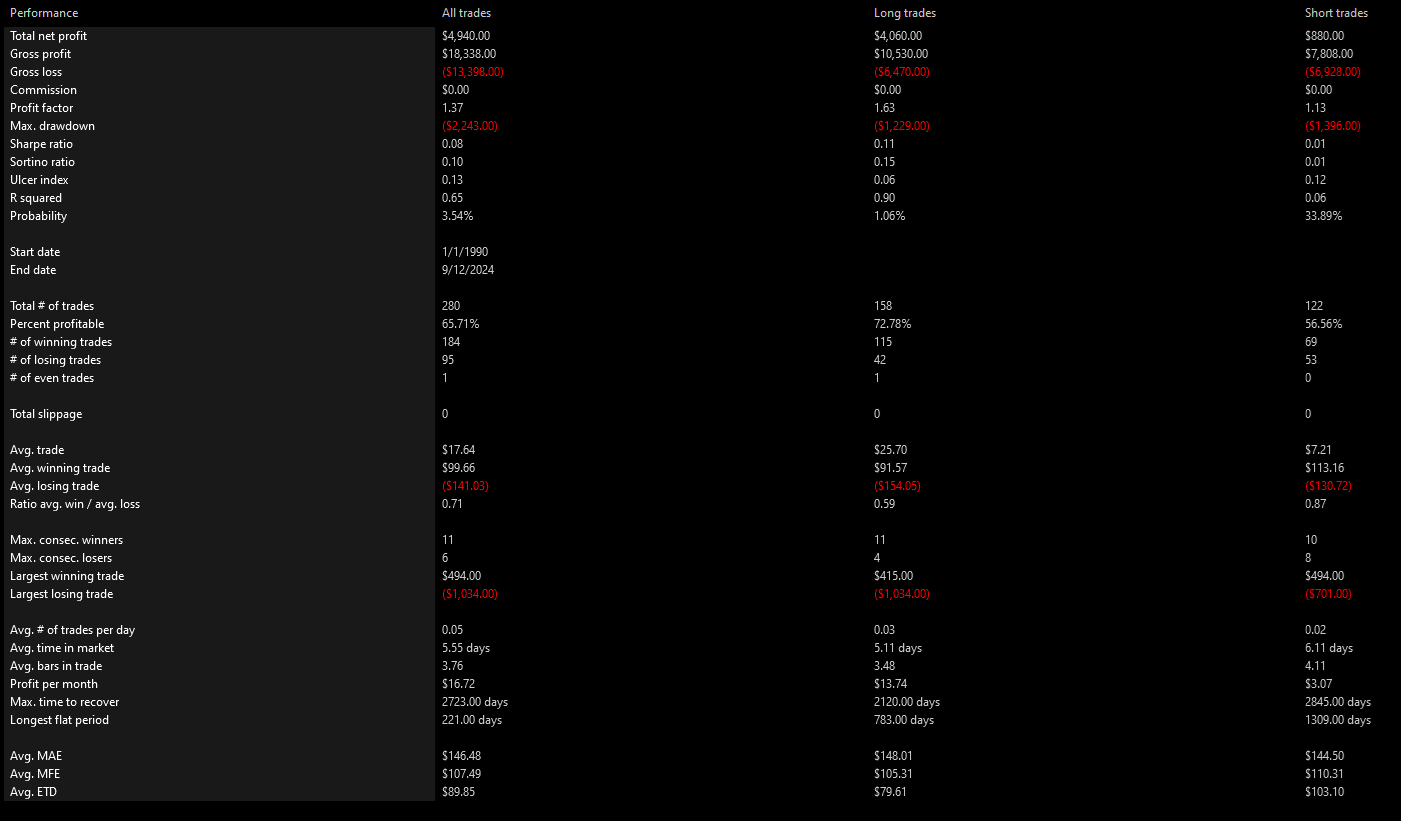75 lines
2.9 KiB
Markdown
75 lines
2.9 KiB
Markdown
# 3-Day High / Low Bot
|
|
|
|
This strategy was taken from chapter 2 of [*High Probability ETF Trading*](https://moshferatu.dev/moshferatu/high-probability-etf-trading) (2009) by Larry Connors.
|
|
|
|
## Rules
|
|
|
|
**Long Trades**
|
|
|
|
1. The ETF (e.g., SPY) is above its 200-day moving average.
|
|
2. The ETF closes below its 5-day moving average.
|
|
3. The ETF must make a lower high and lower low for 3 consecutive days.
|
|
4. Enter a long if the above conditions are met.
|
|
5. **Aggressive Version** (optional): Enter a second long if price closes lower than the initial entry at any point during the trade.
|
|
6. Exit when the ETF closes above its 5-day moving average.
|
|
|
|
**Short Trades**
|
|
|
|
The inverse of the long trade rules, but stated explicitly:
|
|
|
|
1. The ETF (e.g., SPY) is below its 200-day moving average.
|
|
2. The ETF closes above its 5-day moving average.
|
|
3. The ETF must make a higher high and higher low for 3 consecutive days.
|
|
4. Enter a short if the above conditions are met.
|
|
5. **Aggressive Version** (optional): Enter a second short if price closes higher than the initial entry at any point during the trade.
|
|
6. Exit when the ETF closes below its 5-day moving average.
|
|
|
|
**NOTE**: The strategy will work on any asset, not just ETFs.
|
|
|
|
## Parameters
|
|
|
|
**Consecutive Days**: The number of days in a row in which higher highs / lows or lower highs / lows must be made. (Default: 3)
|
|
|
|
**Long-Term Trend Period**: The period to use in the long-term trend calculation as measured using a simple moving average. (Default: 200)
|
|
|
|
**Short-Term Trend Period**: The period to use in the short-term trend calculation as measured using a simple moving average. (Default: 5)
|
|
|
|
**Enable Long Trades**: Whether to allow going long in the strategy. (Default: true)
|
|
|
|
**Enable Short Trades**: Whether to allow going short in the strategy. (Default: true)
|
|
|
|
**Enable Aggressive Entries**: Whether to allow for entering a second trade when price initially moves against the first. (Default: true)
|
|
|
|
## Backtest Results
|
|
|
|
### SPY
|
|
|
|

|
|
|
|

|
|
|
|
### QQQ
|
|
|
|

|
|
|
|

|
|
|
|
### DIA
|
|
|
|

|
|
|
|

|
|
|
|
## XLE
|
|
|
|

|
|
|
|

|
|
|
|
## XLF
|
|
|
|

|
|
|
|

|
|
|
|
--- |